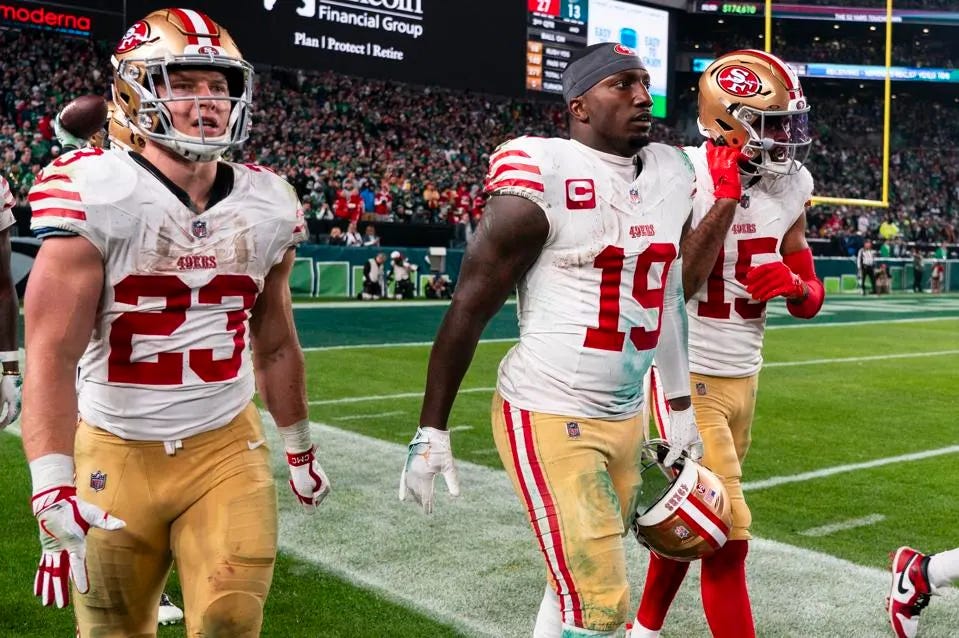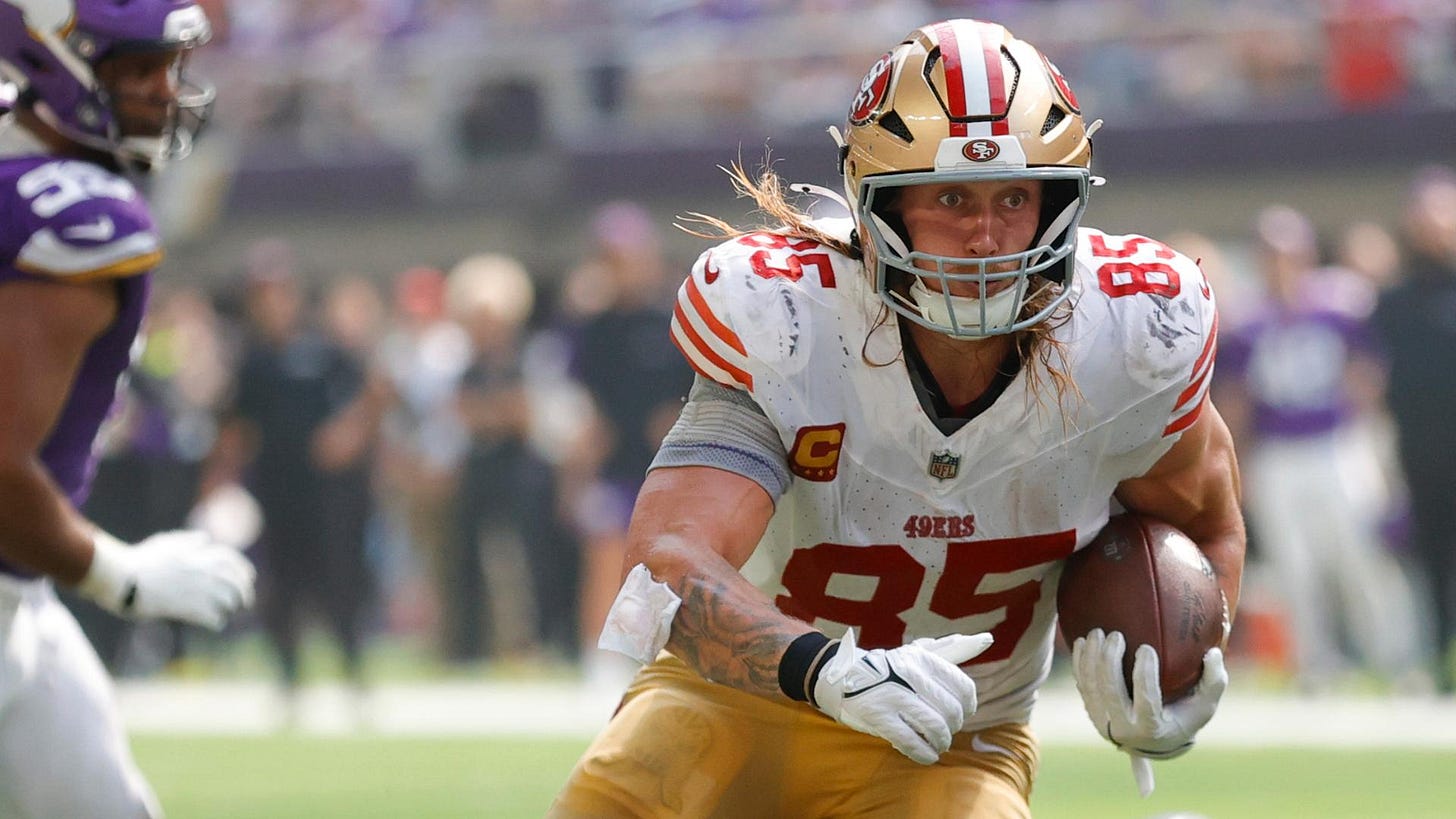The San Francisco 49ers Reactive Strength Problem: George Kittle Spotlight
The Rams and 49ers game this weekend highlights the NFL's Reactive Strength Problem.

Hold My Beer
The NFL has a reactive strength problem, and the 49ers are the poster franchise for spotlighting just how much this limiting constraint impacts high performance. At the time of writing, they have three All-Pro offensive players—Christian McCaffrey, Deebo Samuel, George Kittle—sidelined with various lower-extremity reactive strength injuries. This Sunday, they face the Los Angeles Rams, who are dealing with their own reactive strength issues, with two All-Pro receivers—Cooper Kupp, Puka Nacua—out due to, you guessed it, reactive strength injuries. It's almost as if the Rams said, "We have a reactive strength problem," and the 49ers responded, "Hold my beer."

"Situational Chaos"
It is a physiological fact that athletes' central nervous systems will continue to develop greater connectivity, enabling the neurology to drive more potential from the biology. This increased connectivity will push the biology into what we call "situational chaos"—allow us to explain using Absolute’s Point B nomenclature.
Situational chaos, in the context of the NFL’s Reactive Strength Problem, refers to scenarios where the bottom-up biological element of reactive strength—connective tissue architecture (CTA)—experiences large stressors, especially during change-of-direction force transmission at the fastest attainable speeds. From a CTA standpoint, the tissue rapidly transitions from lengthening to absorbing high force, briefly storing eccentric energy, and then reversing direction to make a football move—all of this occurring at maximal speed.
As the nervous system develops greater connectivity to the muscular tissue—creating more efficient nodes in the neurological network of absolute strength—these enhanced connections allow the muscles to generate more force. This brings more of the muscles’ potential into action, and as more of this potential becomes realized, that energy must be transmitted through the connective tissues. The connective tissue infrastructure must handle and transmit this increased force repeatedly, without injury.
The Role of Reactive Strength in George Kittle's Position-Specific Performance
As a tight end, Kittle’s role requires frequent transitions between blocking, route running, and explosive movements like cutting and sprinting—often times all within a single play. His ability to execute these responsibilities depends on his capacity to absorb and redirect force, making reactive strength essential for him to generate high performance in these position-specific football scenarios. Here’s a video of him explaining these scenarios and how he practices them, which will help you better understand some of the tissue-specific physical prerequisites he needs.
Keep reading with a 7-day free trial
Subscribe to Absolute: The Art and Science of Human Performance to keep reading this post and get 7 days of free access to the full post archives.





